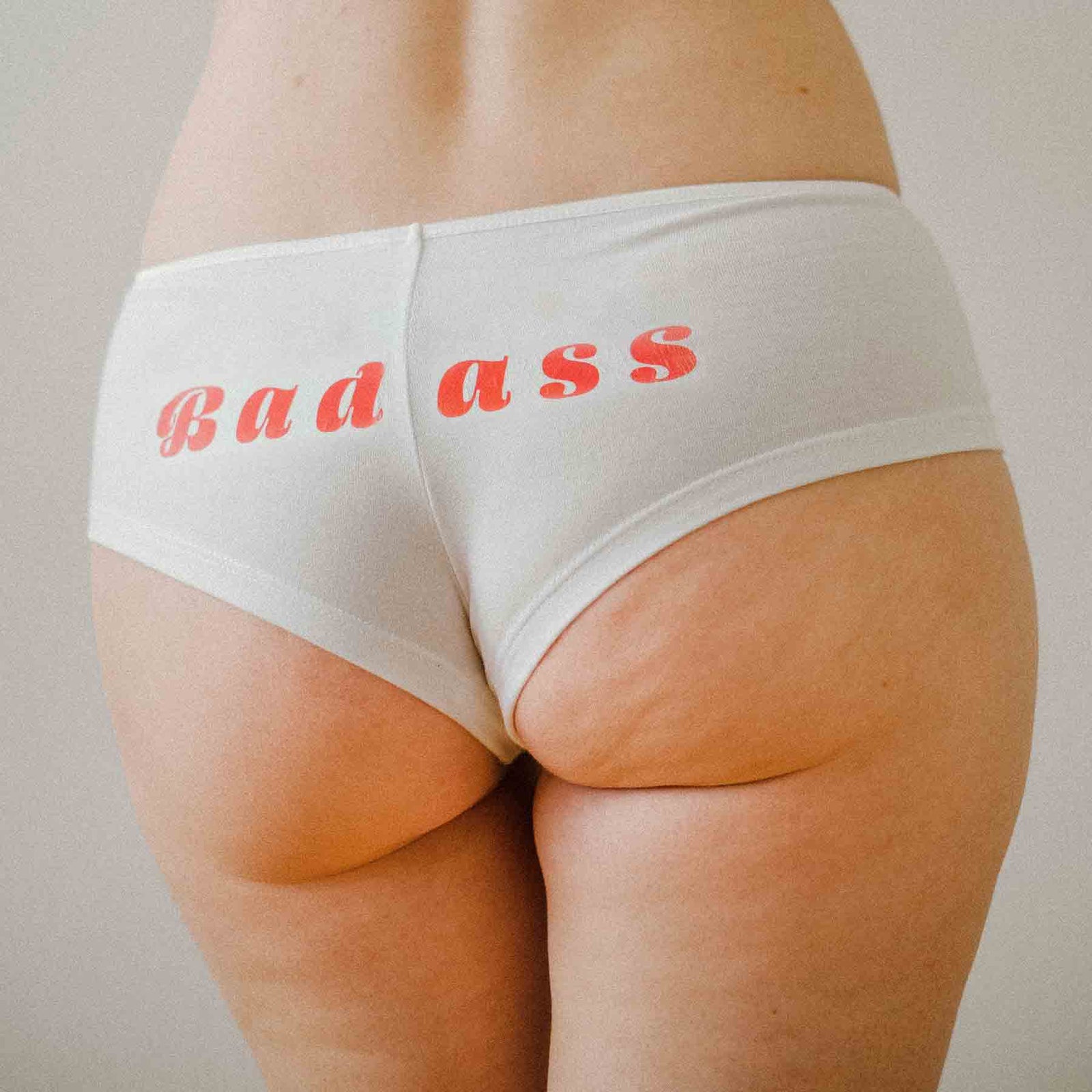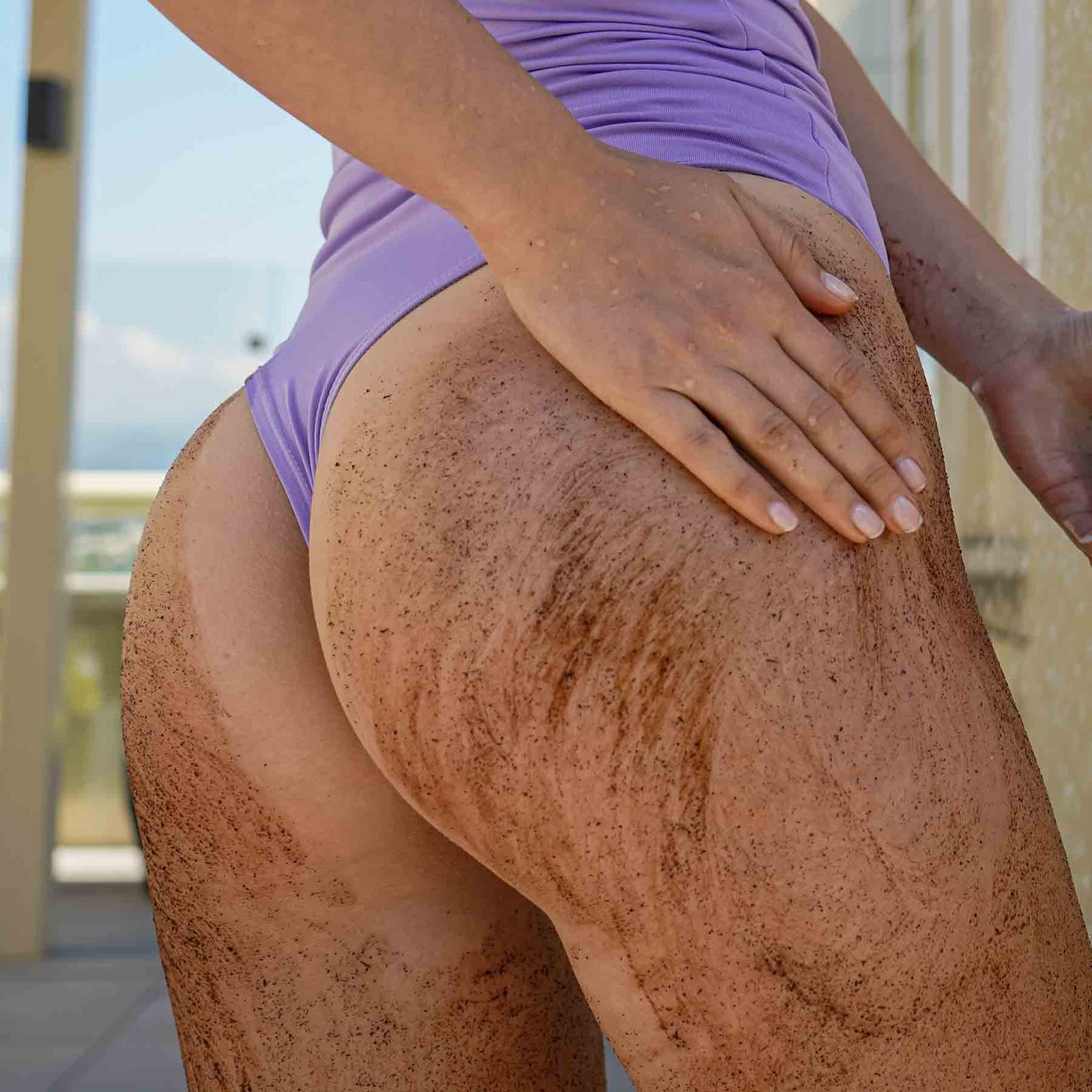Get 15% off your first purchase – Use code WELCOME15 at checkout!
Get 15% off your first purchase – Use code WELCOME15 at checkout!
Cellulite vs Fat: Know the Difference
August 07, 2024 4 min read

For as long as we can remember, we've been led to believe that cellulite is entirely about fat, and that our body fat percentage is directly tied to the dimples that pop up, seemingly out of nowhere, on our belly, arms, butt and thighs.
In reality, while cellulite and fat have a bit of a cause-and-effect courtship, cellulite really isn't about fat, and they are absolutely not the same thing.
Is it Fat or Cellulite?
At a basic level, cellulite is the dimpling of skin. It's the word we use to describe when our skin's texture takes on a rippling effect that makes it appear slightly lumpy and uneven. Fat, on the other hand, is a substance our body produces in two forms: subcutaneous and visceral.
Subcutaneous fat cells live just beneath our skin, while visceral fat is the more robust fat our body uses for cushion and protection. When we're talking cellulite, we're talking skin, so subcutaneous fat it is.
If you're looking at your skin and seeing those uneven dimples we referred to, you're looking at cellulite.
How Cellulite Forms
Cellulite forms when the fat cells that live in our hypodermis, our secondary layer of skin, break through our first-line-of-defense skin layer, our dermis. That’s the cause-and-effect courtship we were talking about.
In the hypodermis, our fat cells (which we do need for energy, so unfortunately they’re not going anywhere) house themselves in tiny compartments made up of fibrous tissue chords called septae. When fat cells are born, they fit easily inside these compartments - and essentially mind their own business. But if the cells begin to expand, they stretch the septae holding them in, ultimately popping through once they grow big enough.
The outer layer we mentioned, the dermis, is where collagen and elastin form, and together they form a mesh-like weave responsible for the texture of our skin. The tighter the weave, the tauter the texture. Fun Fact: This process is why cellulite effects 90% of women and only 10% of men - the tissues that makeup a woman's dermal weave naturally connect in a parallel line pattern, while men's connect in a crisscross pattern. The extra density of a man’s dermal weave makes it tougher for the fat cells in the hypodermis to break through.)
When our weave isn't strong or stretchy enough to fend off the pressure from fat cells, they start to push through our dermis to create a ripple in the skin - what we see as the dimples that indicate cellulite has arrived.
What Causes Cellulite
There are a host of factors that contribute to the dimples that form on your derriere, but what it really comes down to is the integrity of that dermal weave we just talked about. So the things that can cause the weakening of the dermis are ultimately the triggers that lead to the appearance of cellulite.
Diet
Sugary, carb-loaded foods are a friend of cellulite - NOT a friend of yours. Fat cells love to soak up sugar, so when there's an excess amount available, those cells continue to expand. The bigger they get, the more likely they are to push through your dermis and set up shop.
Lack of Circulation
Blood flow, on the other hand, is your friend. When circulation is stagnant, there's nothing to break up or move around the fat cells in your hypodermis, giving them a greater chance of pushing through the surface.
Exercise is a natural way to boost blood flow, especially cardio exercises like running, biking, spin, swimming, jump rope, tennis… you get the picture. The more you move, the more your blood flow moves.
But exercise isn't possible for all of us. Some of us are fighting injuries and ailments that make it impossible, and others are just too swamped to carve out the time to do it consistently. Cupping treatments and body scrubs packed with caffeine and active ingredients proven to kickstart circulation are a bombshell way to boost blood flow, sans the sweating.
Time is Inevitable
It’s our least favorite one, but it's the one we see the most, so we have to talk about it. As we age, our body naturally stops producing collagen at the same rate it does in our younger years, meaning our dermal weave is going to weaken over time.
When you're selecting your skincare, look for lotions that tout elasticity-supporting ingredients and benefits that give your body a little help in the collagen-production department.
It's In Your Genes
If your mom's got it, your dad's got it, or your grandma’s got it, odds are you're going to do your own dance with cellulite at some point in time. The structure of our dermis and hypodermis can be heavily influenced by our genetics, so a weakened skin weave can run in your family.
There's no changing what you’re born with, so if you're up against family-given fascia, then paying extra attention to your diet, exercise regimen, and the products you're using to treat the appearance of your cellulite is imperative.
Cellulite can be a drag, but it's not a death sentence. You just have to understand it, and then you can take all the right steps to do something about it, if you want to. Don’t let the dimples keep you down.
Also in News

Dimples Overnight: What Causes a Sudden Increase in Cellulite
January 08, 2025 4 min read
You’ve just woken up and dove headfirst into your morning routine. You headed to the kitchen to grab your morning coffee, maybe went for a...

8 Powerhouse Ingredients To Get Rid of Cellulite on Buttocks and Thighs
December 13, 2024 3 min read
90% of us have cellulite. That’s the facts, but it come with questions. What causes cellulite, how does it form, and - probably the most...

Why Living Your Best Life Reduces Cellulite
December 04, 2024 3 min read
There’s no way around it: there are no quick fixes to cellulite removal. It takes commitment and consistency to a healthy lifestyle to dissolve those dimples on your derrière, and even then, ongoing treatments may be needed..

Welcome to BABZ!
Subscribe for sneak peeks at new collections, discounts, and early access to flash sales!
